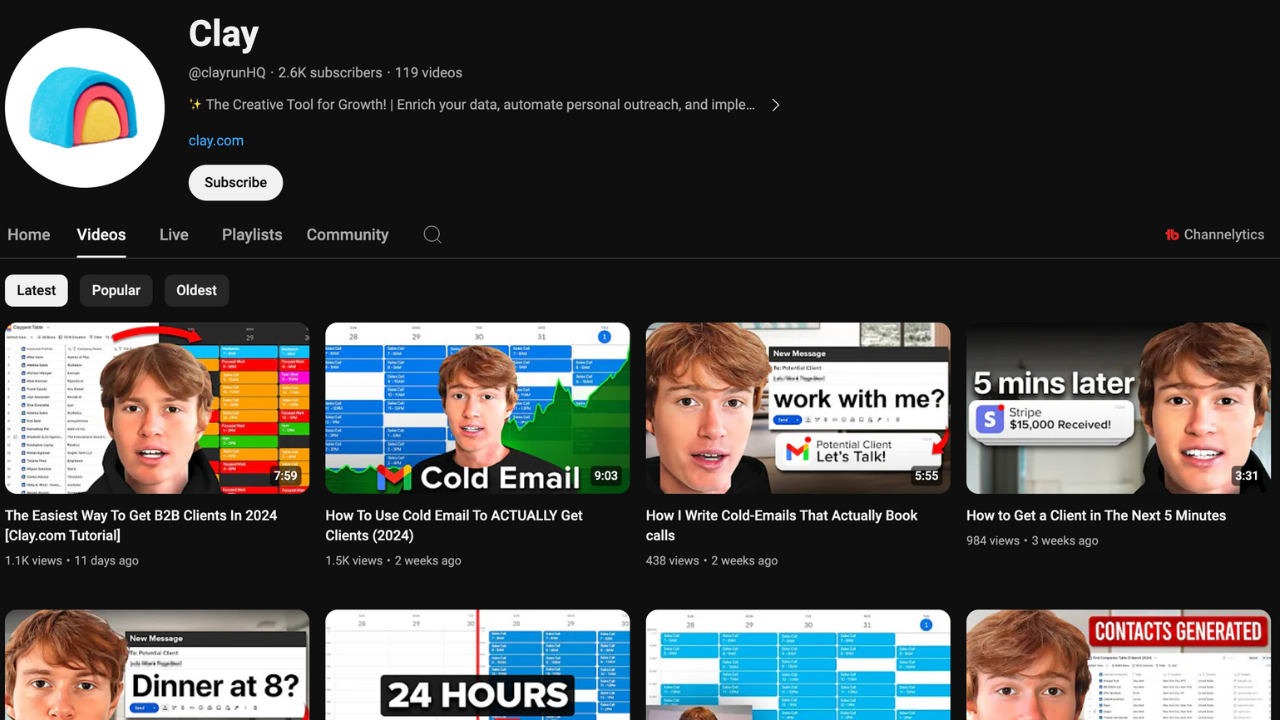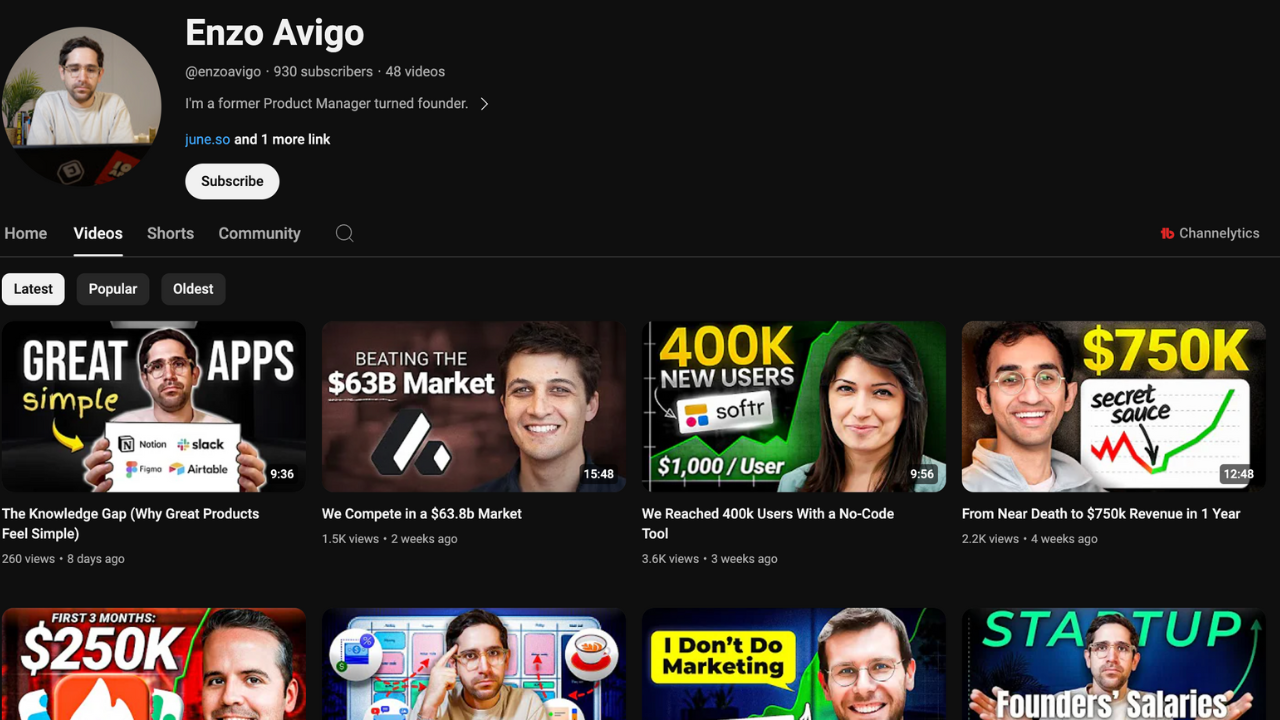The 5 Best Examples of B2B SaaS YouTube Channels
Written by, Josef Newton (Co-Founder at Sway One)
Introduction
For the last couple of years, I’ve consistently made the statement on LinkedIn and on podcasts that “Youtube is the sleeping giant” of B2B content marketing. In my opinion, YouTube has been a grossly undervalued as a channel and to be fair, rightly so. I mean... it’s not exactly the easiest channel to make sense of. So, in this article I’m going to lay out five different approaches to YouTube from five different B2B SaaS companies. But before we get into those approaches… why YouTube? 1. Search behaviour is changing. If there’s one thing search behaviour is not in 2024… it’s linear. Gone are the days where buyers would complete one google search… read one article and complete a purchase. We live in a very different world now. In 2024, buying journeys are complex, multi-platform… and heavily influenced by video content on social platforms (TikTok, Instagram, LinkedIn etc.) as well as YouTube. 2. Buyers want to do their own research. More than ever now… buyers want to be able to do their own research and reach a buying decision before they’ve even spoken to sales. The best way to help them do that? A library of helpful and educational YouTube content both about your product but also on more general topics relevant to their everyday problems and job. In 2024, if company A has zero YouTube content and company B has a library of 50+ educational videos… I’d bet company B wins that “buyer race” every single time (providing they’re also doing the other things right, of course). 3. People like people, not faceless corporations. If there’s one trend that’s absolutely undeniable now… it’s that consumers/audiences are consuming considerably more content from individuals NOT corporations. And are (arguably) getting considerably more influenced by these individuals about what products to buy as opposed to those corporations. i.e. the individual now influences the buyer… not the faceless corporation (yes, even in B2B). And YouTube plays right into this as it’s 100% personality-driven. Over time, with the right content, YouTube creators build a connection with their audience… to the point where the audience actually feels like they personally know them. __________ So now that we’ve got the WHY covered - what are the different approaches you can take to Youtube as a B2B SaaS company? Well, to help with that, I’ve gathered five different B2B SaaS company YouTube channels and broken down their approaches.
1. CloudTalk, Presenter-driven approach
Cloudtalk, call center software, uses a presenter/actor-driven approach. They focus both on product and topic explainer videos. One of my favourite videos from their channel is “How much does call center software cost?” because it perfectly integrates their product into a more general topic explainer (SEO) video. Pro: the main advantage of using a presenter/actor-driven approach is that it’s usually the best way to guarantee strong video delivery and performance… as actors are the most comfortable behind a camera. Con: for certain thought-leadership driven videos where deep subject matter expertise is required, actors won’t be the best fit. For that, you’ll want your founder (or another exec) but for product/marketing videos, they work really well.
2. Clay, Creator-driven approach
Clay, sales automation software, uses a creator-driven approach. They focus mostly on topic explainer videos that almost have a “MrBeast-esque” style to them (rare in B2B). I personally love their approach because in every video they perfectly blend informative/engaging content with Clay product-focused content… showing the audience how they can use Clay to help them get better at sales outreach. A great example of this is, is in this video, “How I Write Cold-Emails That Actually Book Calls.” Pro: the main advantage of the creator-driven approach is that you’re able to tap into the creators audience from day one, meaning it doesn’t take as long to get off the ground from a views/subscribers standpoint. Con: certain creators can be expensive, which can make it difficult to achieve the consistency needed for YouTube success.
3. Causal, Founder-driven approach
Causal, a finance software, uses a founder-driven approach. They focus on product explainer videos as well as comparison videos. If you’re looking for product video inspiration, take a look at their “causal vs excel” series. It’s a great example of comparison content, done right. Pro: the main advantage of the founder-driven approach is that it’s a great way to help build the founders personal brand and position them as an expert authority in their industry. Con: founders are super stretched for time, so more likely than not you’ll run into consistency issues as they just won’t be able to properly prioritize it.
4. June.so, Founder-driven approach (personal channel)
June, product analytics software, also uses a founder-driven approach… but with a twist (and different approach to video content). They focus on sharing the stories of other startups and founders, like in this video they recently published about the story of funnily enough… Causal, “From Near Death to $750k Revenue in 1 year.” But secondly, the channel isn’t branded as “June.so,” it’s branded as the founder's name “Enzo Avigo.” So it’s a personal channel rather than a company channel. Pro: Similarly to Causal, the main advantage here is that it’s a really great way to build the founder's personal brand. Except in this case… it’s arguably even better because it’s branded around the founder. Con: for some startups, it may not be a great idea to lead so heavily with the founder's brand and have them so front-facing… just in case it creates any issues later down the line with exiting/selling the business.
5. Cognism, Influencer-driven approach
Cognism, B2B contact data software, uses an influencer-driven approach. They focus on in-depth topic explainer video content and live educational workshops. I personally love their video series format called “cold calling live” because it blends in their core product use case really well (phone contact data). Pro: the main advantage of the influencer-driven approach is that similarly to the creator-driven approach… you’re able to tap into an existing audience base from day one. And even more so when you’re using this approach, as you’re tapping into multiple different influencer audiences. Con: logistically, it’s pretty challenging to get several different influencers consistently creating videos for your YouTube channel. As well as that, it may not also be the most “budget-friendly” option as industry influencers aren’t typically cheap.





